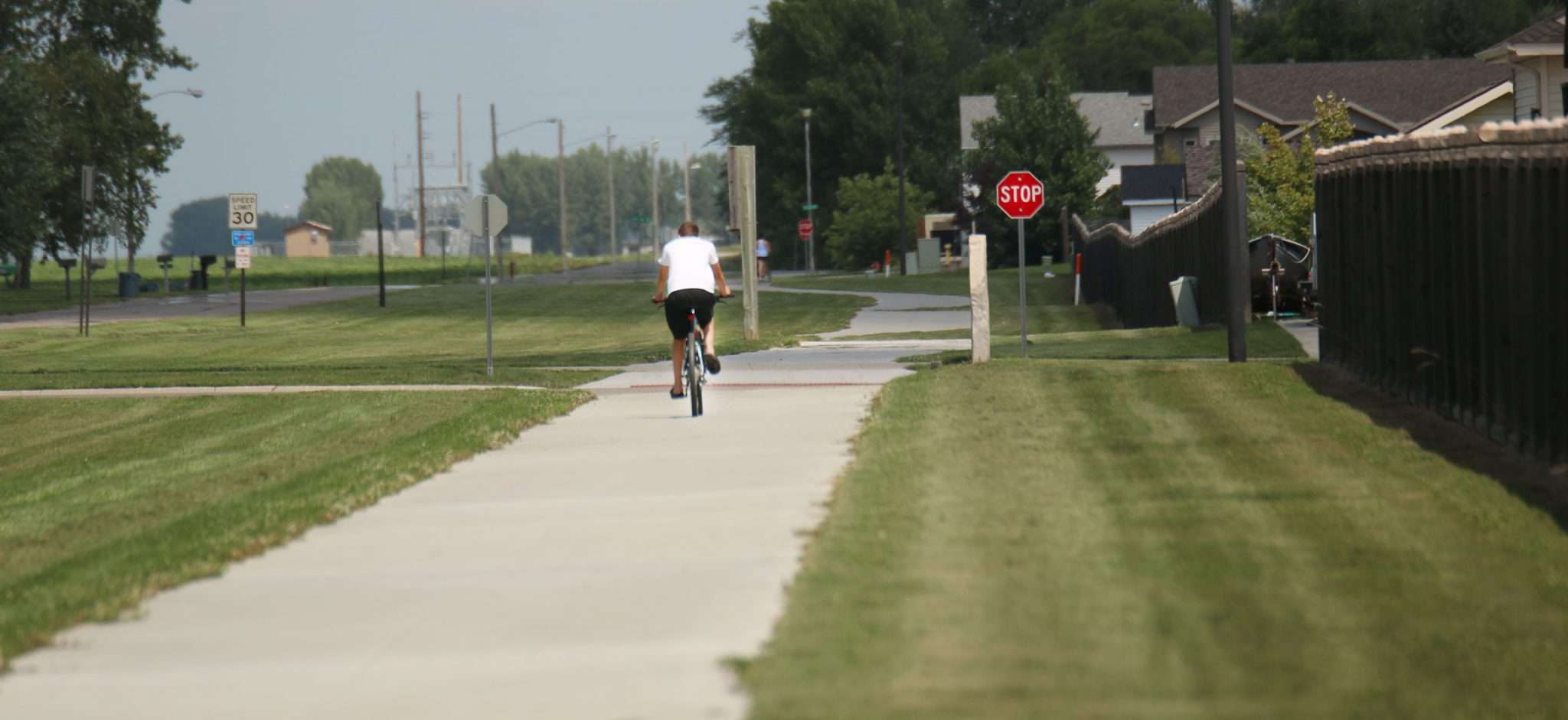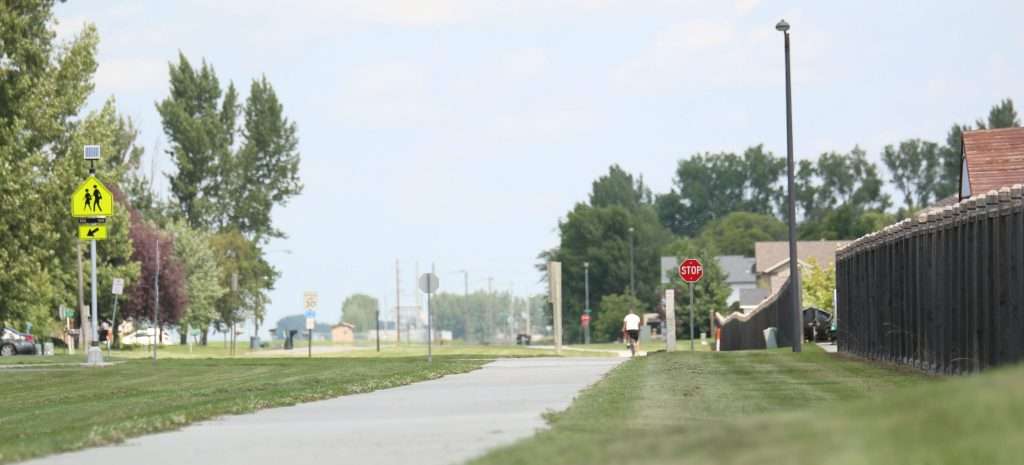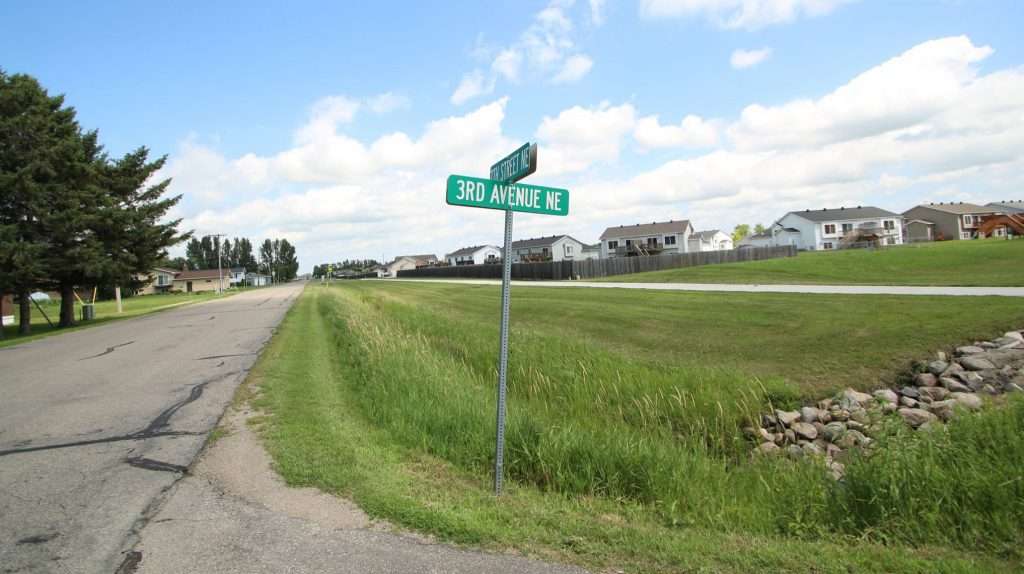
How Moore Engineering helped local communities achieve Safe Routes to School
Does your family use the daily walk to school as an opportunity to exercise and spend time outdoors? If your school lacks a continuous, safe path to the school zone, your opportunity might be limited. It is not uncommon, especially for new schools, to lack sufficient paths and crossings necessary for every student to have a route to school.
Rothsay, Minn., for example, built a new school in 2015 that is only accessible by crossing two county roads. To make the school more accessible on foot, Moore was involved in planning for a Safe Routes to School (SRTS) project that will construct a safe walking and bicycling path to school.
SRTS programs provide an opportunity to make walking and bicycling to school safer and more accessible for children, including those with disabilities.
Sadly, since the 1960s, walking and biking to school has decreased immensely. According to an article by the U.S. Department of Transportation Federal Highway Administration, about half of all students walked or bicycled to school in 1969. Today, fewer than 15 percent of morning trips to school are made by walking or bicycling. Over half of all children today arrive at school in private automobiles.
SRTS programs encourage projects that enhance the health of kids and reduce vehicle traffic, boosting the quality of life for community members.
Communities tailor a combination of engineering, education, encouragement and enforcement strategies to address the specific needs of their schools. At Moore Engineering, we’ve worked with several cities to implement the program and use our engineering approach to improve community multi-use paths. In addition to the Rothsay School District, we’ve also assisted the cities of Dilworth, Hawley and Ada in securing SRTS funds and finishing successful projects. Not only do these improvements impact walking and bicycling conditions near a school, they positively affect other parts of the community.
So how do you implement an SRTS program in your community? Here are a few tips from an engineering perspective to get the wheels turning:
Steps to Creating a Safe Routes to School Program
Involve Key Groups and People
The SRTS program works together with cities or school district safety committees. Is there a PTA or school site council that would be interested in the project? What about those representing the disabled? Any type of wellness group or pedestrian-based group or board is a good option, as well. If there are no appropriate groups to take on the issue, form an SRTS coalition. Don’t forget to consider your children’s ideas. What’s important to them? What would they change?

Research and Identify Issues
Identify needed program elements and provide a means to measure the impact of the program later. Map the routes that lead to school. Collect traffic counts, speeds and injury data, and observe arrival and dismissal times. This should help determine how many children currently walk or bike to school.
Identify solutions
Safety first! If it is not safe for children to walk and bicycle to school, these problems should be addressed. Some problems will require engineering solutions; others may require education, encouragement, enforcement or a combination of strategies.
It is likely that the coalition will generate a long list of potential ideas and solutions. Are some issues more critical to address than others? Are there “quick wins” that could be addressed relatively quickly?
For example: consider connecting one network of sidewalks to another that leads to a school. Moore Engineering recently implemented such a solution in Dilworth by designing an SRTS bike path along Seventh Street North. This collector street borders several residential neighborhoods. It was poorly lit with little to no shoulder, and served as an outlet to the surrounding neighborhoods. No sidewalks or bike paths existed along the route, so pedestrian traffic typically used the street to get to the school and facilities. The project connected to a previous SRTS project bike path, providing connectivity from the local neighborhoods to a single point of crossing, keeping pedestrians and bicycles off the road.
Moore Engineering assisted the city in securing funding for the project through the SRTS program, and a new 10-foot-wide concrete multi-use trail was installed in 2014. Included in the project was a grant to fund a rapid flashing solar-powered beacon that flashes caution lights at the main pedestrian crossing.
Make a plan and fund it
In terms of paying for the project, applying for SRTS funds is pretty competitive, with many schools and communities wanting a piece of the pie. SRTS grants fund the construction portion of a project, so the city’s contribution to the project includes the planning and engineering costs, making the projects more cost effective and affordable.

As we did with the Dilworth SRTS project, Moore Engineering commonly explores alternative funding sources to achieve the goals of a city or community, whether or not it’s an SRTS project.
Evaluate, make improvements and keep moving
An SRTS program has the potential to improve walking and bicycling conditions near a school and spread interest into other parts of the community. Coalitions that persist in their efforts and make measurable improvements will be rewarded with safer places for children to walk and bicycle and more children choosing safe routes to school. Careful monitoring will identify which strategies are increasing the number of children safely walking and bicycling to school. Try counting the number of walkers and bicyclists before and after the implementation of an SRTS project.
Although there are many different approaches a community and its planners can take, the SRTS program is worth exploring. If you have additional questions or ideas for a community in need of an SRTS project, let’s chat.